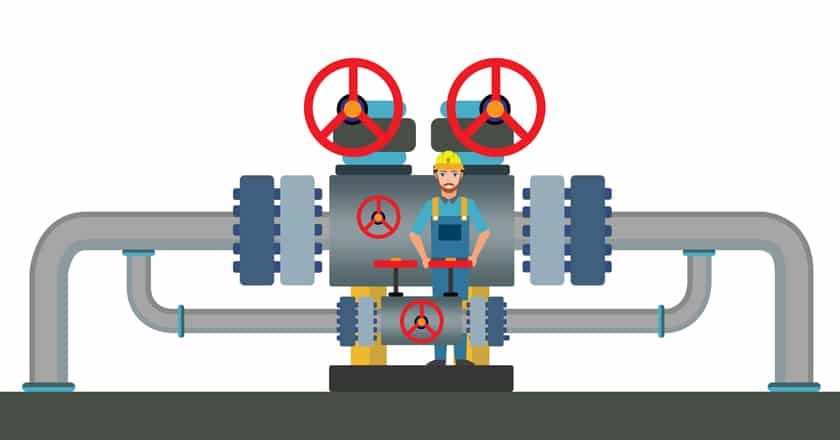Improved Isolation Of Fluid Systems For Maintenance Work
Customer listening is an essential topic at AS-Schneider. AS-Schneider technicians often visit customers together with their sales colleagues to discuss daily challenges, issues and success stories. One point we came across at a customer visit of the gas storage plant “Jemgum” (astora GmbH & Co. KG) in northern Germany is how to take care of maintenance and repair operations in technical plants. In this article, we would like to describe how DBB Valves used in a bypass application provide a solution that can help you saving maintenance and replacement costs.
DBB valves in a bypass application
In human medicine, a bypass is an artificial second path in the human body. Surgeons install it to replace a blocked or reduced way through veins and arteries. A technical bypass used in natural gas storage plants for example follows that principle with different targets. While a human bypass allows a regular blood flow, the technical bypass is used to improve the performance of the main pipeline. Industrial plants use technical bypass applications as a second and smaller loop besides a main pipeline: a bypass line. A bypass valve blocks this smaller loop during regular plant operation. Small versions of DBB Valves like our Taurus Series Valves (bore size 2” and smaller) are perfectly suitable for this bypass valve application.
DBB bypass loop for low operating torque at the main pipeline valve
During maintenance work on pipelines or shutdowns of the plant the pressure difference between both sides of a closed pipeline valve can reach up to 200 bar. Reducing this differential pressure is essential because a high pressure difference results in high operating torque at the main valve. High operating torque leads to a dramatic increase in abrasion – especially at the valve seats and soft sealing elements. Due to its smaller size, the bypass valve is easier to operate and can provide a pressure equation. This leads to highly decreased operating torque, differential pressure and abrasion at the main pipeline valve. This increases the lifetime of the main valve many times over.
The picture below shows a typical bypass application at a natural gas storing plant.

To sum up you can say the basic principle of this application consists in tolerating higher abrasion at a smaller bypass valve for decreased abrasion at the main pipeline valve in return and to ensure a high level of tightness as long as possible. The bypass valve wears out in order to extend the lifespan of the bigger process valve. The target of this type of application is reducing the Total Costs of Ownership (TCO) related to the process valve.
For more information about the principle of TCO, click here: Principle of TCO
Planning and modernization work
Using a DBB Valve as bypass valve offers another advantage: The DBB Valve has the same face-to-face dimension as a conventional single block ball valve. This valve length is specified in ASME B16.10 and APl 6D. Taurus Series DBB Valves combine three valves in one product. Technicians can replace three conventional valves with only one. Therefore, the valve can be installed easily into an existing pipeline without any major rework at the pipeline.
For more information check out our landing page with focus on planning and modernization work and download the whitepaper.
How does Double Block and Bleed work?
(Image source: © Zuhaibnaqvi / Fiverr & AS-Schneider)
